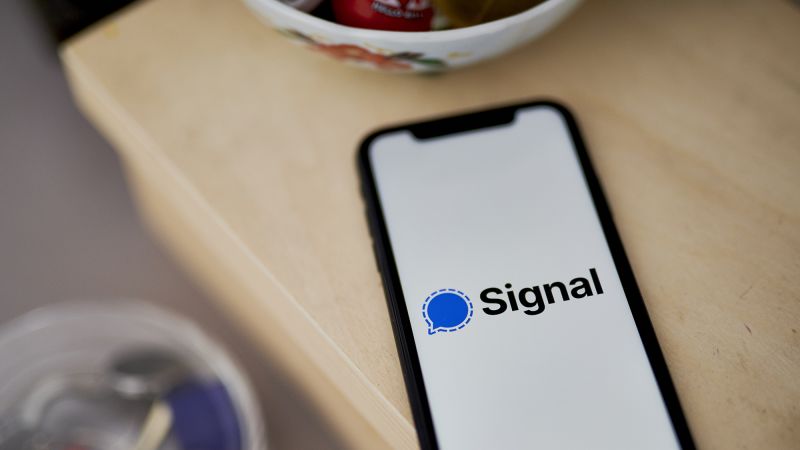Signal, a secure messaging application that has been gaining traction among journalists, has recently drawn notable attention due to its robust privacy features. On a particular Monday, the editor-in-chief of The Atlantic, Jeffrey Goldberg, disclosed that he was added to a group chat with members of President Donald Trump’s Cabinet regarding military operations in Yemen. This revelation has raised serious concerns regarding national security, highlighting the implications of using Signal for sensitive discussions.
Signal’s privacy is often touted as one of its main advantages over other messaging platforms such as WhatsApp, which is owned by Meta, and iMessage from Apple. While Signal provides users with a host of privacy features, it is essential to understand that these tools are not a silver bullet for safeguarding classified information. As Matthew Mittelsteadt, a technology policy researcher at the Cato Institute, pointed out, security may break down once messages reach their intended recipients. Factors such as the security of the devices and the parties involved are critical to the conversation’s privacy.
Despite some inherent vulnerabilities, Signal has established itself as a leader in user privacy. It is managed by a non-profit entity called the Signal Technology Foundation, in contrast to many popular applications that are part of large for-profit corporations. The app allows users to perform typical messaging functions like sending individual messages, setting up group chats, making voice calls, and even sharing temporary “stories” reminiscent of those on Instagram and Snapchat. Additionally, Signal is advertising-free and offers the capability to send messages that disappear after designated timeframes, from a mere 30 seconds to as long as four weeks.
Conversations conducted on Signal—including its Stories feature and user profiles—are encrypted end-to-end by default. This level of encryption guarantees that the content is scrambled during transit and can only be decrypted by the sender and recipient. Following its privacy policy, Signal is incapable of accessing message content, call details, or user identities. As Eva Galperin, the director of cybersecurity for the Electronic Frontier Foundation, emphasized, if authorities were to present a warrant or a subpoena to Signal, there would be minimal information available for them to retrieve.
Message histories are stored locally on the user’s device, which is a stark difference from many messaging apps that keep data on their servers. While Signal briefly queues messages on its servers for delivery to devices that might be offline, the vast majority of communication remains on the users’ devices. A unique feature of Signal is the “safety number,” a unique code that allows users to verify their messaging partner’s identity.
The app’s combination of features—including end-to-end encryption, local message storage, and the absence of trackers—helps maintain a level of user privacy that many competing applications do not provide. Other messaging platforms that claim to offer end-to-end encryption may still collect non-encrypted contact data, as indicated by Daniel Kahn Gillmor, a senior staff technologist for the ACLU’s Speech, Privacy, and Technology Project.
Signal is readily available on both iOS and Android platforms, downloadable from the App Store and Google Play Store, respectively. To set up an account, users must provide a phone number that can receive text messages or calls, ensuring a verification check to create a profile. However, users retain the option to keep their phone numbers hidden while interacting on the platform.
Navigating through Signal is straightforward; users can search for contacts already using the app or connect with others through their usernames. If they acquire a new device, it is critical to have access to the old one to transfer message history, particularly since Signal retains conversations solely on the user’s device.
Within the Signal interface, users can manage conversations by tapping on contact names, allowing adjustments such as viewing safety numbers, setting message expiration times, and even muting notifications. For those particularly concerned about privacy, Signal offers advanced options like concealing app content when switching between applications on their devices.
Despite the myriad of privacy features available, users should remember that once a message is sent, the recipient retains access to it unless the sender acts quickly to delete or modify the communication before it is opened. As Galperin rightly stated, while end-to-end encryption secures communications from prying eyes, the recipient still has full visibility of the exchanged messages. It is therefore vital for users to understand their control over the content they share, underlining the balance between privacy and responsibility in digital communication.



